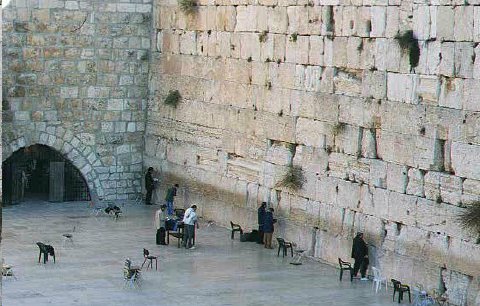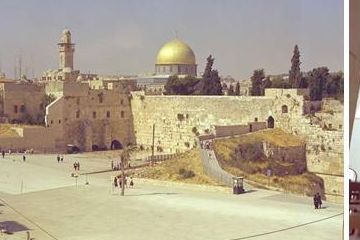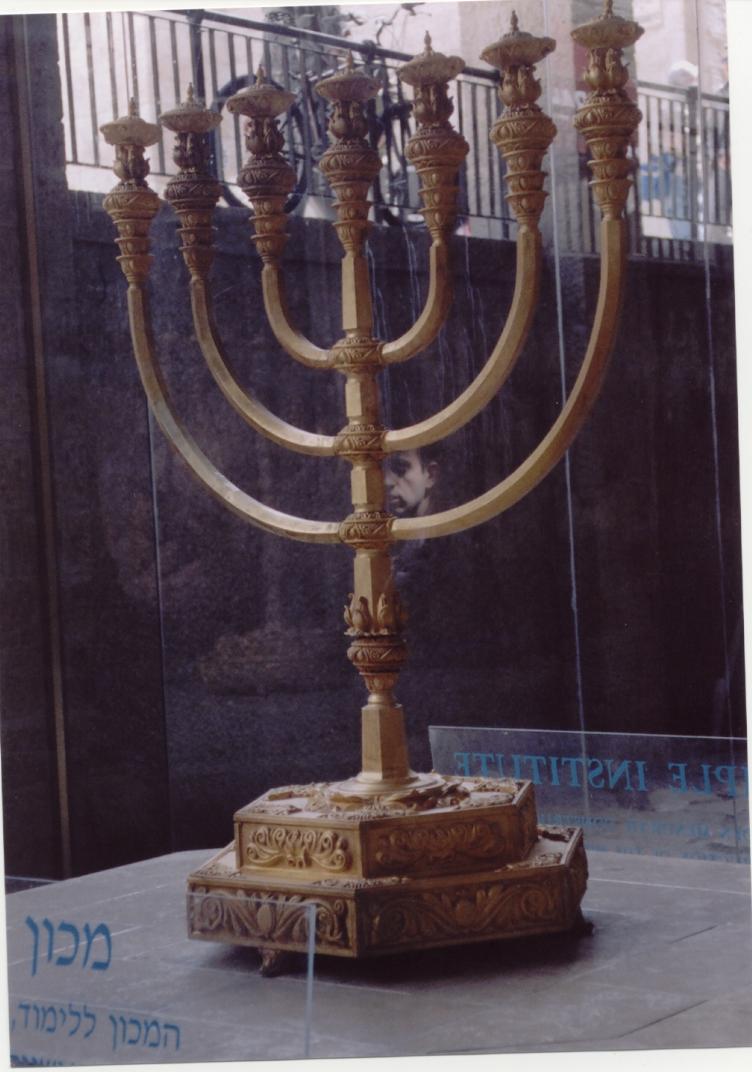

Jerusalem's Old City walls
Jerusalem's Old City Wall
encompasses an area of barely 1kmē. The existing wall was built in the 16th
century (1535-1538) by the Sultan Sule iman
the Magnificent of the Ottoman Turks. The 4,018 meter long wall incorporates
older parts from the Second Temple, Roman, and Byzantine and Medieval p
iman
the Magnificent of the Ottoman Turks. The 4,018 meter long wall incorporates
older parts from the Second Temple, Roman, and Byzantine and Medieval p eriods.
eriods.
Before King David's conquest of Jerusalem in the 10th century BC the city was known as Jebus and the home of the Jebusites. The Bible describes the city as heavily fortified with a strong city wall but not much is known about it.
King Solomon extended the city walls. In about 440 BC, under the Persian period, Nehemiah arrived from Babylon and rebuilt them.
In AD 41-44 Agrippa, king of Judea, built a new city wall known as the "Third Wall".
In 135, after
 Emperor
Hadrian's total destruction of Jerusalem and renaming it to Aelia Capitolina he
rebuilt the walls.
Emperor
Hadrian's total destruction of Jerusalem and renaming it to Aelia Capitolina he
rebuilt the walls.
In 1219 the walls of the city were razed by order of the al-Mu'azzim Sultan of Damascus; in 1229, by treaty with Egypt, Jerusalem came into the hands of Frederick II of Germany. In 1239 he began to rebuild the walls; but they were again demolished by Da'ud, the emir of Kerak.
In 1243 Jerusalem came again into the power of the Christians, and the walls were repaired. The Kharezmian Tatars took the city in 1244 and Sultan Malik al-Muattam razed the city walls, rendering it again defenseless and dealing a heavy blow to the city's status.
The current walls of the Old City do not include the original area conquered by King David. This area, which is now called the City of David, is located to the southeast of the current Old City, outside The Dung Gate.